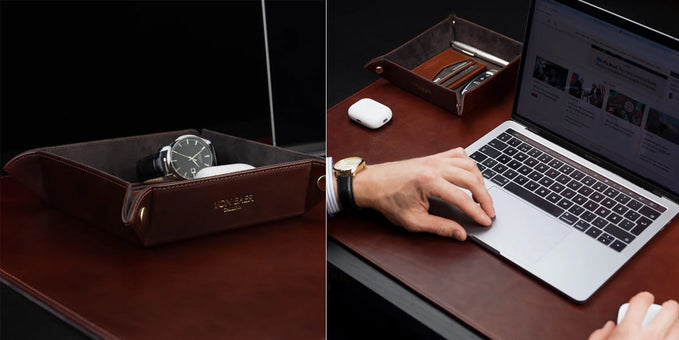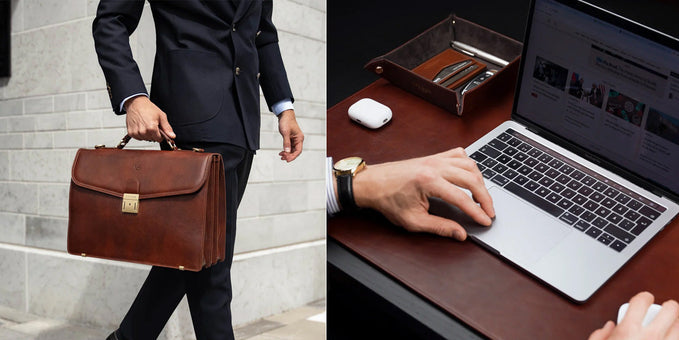How To Fix Bonded Leather Peeling

Leather’s timeless beauty and durability have long been admired and although there are many types, bonded leather’s popularity has increased thanks to its popularity and versatility.
Bonded leather, however, is plagued with this issue of peeling.
We delve into the causes, explore preventative measures and discuss options for repair in this comprehensive article aimed at the preservation of your bonded leather quality.
Bonded Leather Peeling Repair
- Before embarking on any repairs: The extent of the peeling damage should be thoroughly assessed. Determine if the peeling has progressed to a point where it’s beyond the help of a DIYer, or if it is a minor cosmetic issue that you can fix yourself. If the structural integrity of the item is compromised or it covers a large area, seeking a professional repair service is advisable.
- Quick solutions and temporary fixes: The steps are as follows:
- Clean the affected area: The peeling area should be cleaned with a mild leather cleaner and a soft cloth to remove debris, dirt, and dust.
- Adhesive application: A small amount of flexible, clear adhesive or fabric glue should be used on the peeling area edges. Edges should then be pressed in and held firmly back into place while the adhesive sets. The adhesive manufacturer’s instructions should be followed.
- Surface smoothing: Smooth out wrinkles or bumps that might have appeared during the process of reattachment using a soft, clean cloth. To ensure the adhesive bonds the edges securely, apply gentle pressure.
- Drying time: Allow to dry thoroughly according to the manufacturer’s instructions before use to ensure the bond is strong and will endure.
- Results evaluation: Determine whether the repair addresses the peeling sufficiently. Remember that temporary repairs may not provide a solution that is permanent. For long-term results, a professional repair may be necessary.
- Options for professional repair: Repairs by skilled leather technicians who have the tools and expertise to perform advanced repairs are recommended for significant or extensive peeling. Depending on the extent of the damage, the specific steps and techniques used by the professional involved will vary. The process may include the following:
- Assessment: The peeling area and bonded leather condition will be thoroughly examined by the leather technician and, depending on the specifics of the situation, the best course of action will be determined.
- Preparation and cleaning: Any loose or flaking particles will be removed by the technician and the peeling area cleaned to ensure adhesion during the process of the repair.
- Patching and re-bonding: Specialized adhesives or bonding agents may be used by the technician to securely reattach the peeling edges. In addition, bonded leather patches or inserts made may be used to provide structural support and reinforcement.
- Finishing and color matching: The color of the repaired section will be matched to the surrounding leather where necessary. A seamless blend is achieved by applying pigments or dyes. A protective finish or coating may also be applied, to enhance appearance and durability.
- Curing and drying: Depending on the specific products used, the leather will be left to cure and dry to achieve a durable bond.
- Quality check: The leather will be inspected by the technician to make sure standards of durability and quality are met. Any touch-ups or adjustments will be made before the owner has the item returned.
- If you have the necessary materials and are confident with using DIY techniques for repairs: Minor to moderate peeling can be repaired by yourself by following these steps:
- Clean the area: With a soft cloth and a mild leather cleaner, clean the peeling area to remove debris, dust, and dirt.
- Apply adhesive: Choose a specially designed, flexible adhesive for leather repairs and apply a small amount to the peeling edges as well as the backing material. Press into place and hold until set.
- Smooth and blend: Smooth wrinkles and bumps formed during the reattachment process using a soft, clean cloth ensuring a seamless blend between the surrounding bonded leather and the repaired section.
- Optional color match: A touch-up marker or matching color dye can be used, if necessary, to blend the repaired area with the rest of the item. Evenly apply and let dry following the manufacturer’s instructions.
- Optional protective finish: A protective finish or leather conditioner can be applied to the repaired area to enhance appearance and durability. The instructions for the product should be followed.
- Results evaluation: The DIY repair should be assessed to determine if a satisfactory solution has been provided. Remember that DIY repairs might not be as professional-looking or last as long as those of a leather technician.
- Considering when it's time for a replacement: If irreparable damage, peeling, or unsatisfactory repair results have been suffered by the bonded leather, replacing the entire item may be the most practical consideration. The cost-effectiveness and durability of the repair against replacing the item should be evaluated with the potential for ongoing peeling issues of bonded leather in mind.
Assessment is essential of both the damage and personal skill level before undertaking DIY repairs or professional assistance should be sought.
Bonded Leather Peeling Causes

- Techniques and poor manufacturing quality: Sometimes, substandard techniques or inadequate bonding agents are used during manufacturing. Such shortcuts can cause premature peeling and compromise the bonding strength.
- Poor quality materials used in the bonding process: Leather scrap quality in bonded leather production plays an essential part in its performance. When excessively processed or poor-quality scraps are used, peeling caused by the weakening of the bond between the backing material and the leather particles can occur over the long term.
- Impact of Harsh Environmental Conditions: When exposed to extreme dryness, humidity, excessive heat, or direct sunlight, bonded leather is susceptible to damage. Leather particles may separate from the backing material and result in peeling due to the bonding agents being degraded by these environmental factors.
- Routine Wear and Tear: Deterioration of bonded leather can occur due to friction and daily usage. Continuous bending, stretching, or rubbing can result in peeling due to the weakened bond.
- Neglect of Proper Care and Maintenance: Faster deterioration can occur when regular cleaning and conditioning of bonded leather is neglected. The material is left vulnerable to peeling when adequate care and maintenance are not carried out.
What is bonded leather?

Also named, reconstituted or blended leather, bonded leather is usually a mix of fibers from leftovers and scraps and a bonding agent.
A leather-like material is created from this combination once processed and adhered together.
How is it made?
Bonded leather is made using leather scraps, which are shredded or ground into fine particles during the manufacturing process.
A uniform mixture is made by mixing these particles with a bonding agent, frequently polyurethane, and pressed onto a paper or fabric backing which forms a sheet of bonded leather.
How does it compare to other types of leather?
The differentiation of bonded leather from other artificial materials and real leather is important.
The entire hide of an animal is used to make real leather and it is of superior quality and is more durable with natural beauty.
Artificial materials, for example, faux or PVC leather do not have the authenticity of genuine leather and are entirely man-made.
Pros and Cons
Design versatility, affordability, and leather scrap waste reduction are some of the advantages of bonded leather.
However, it is not as long-lasting or durable as real leather. Another limitation is peeling which is a common issue arising from bonded leather’s inherent nature.
Related articles:
- Repair cat scratches on leather
- Remove water stains from leather
- Clean leather wallet & remove stains/smells
- Remove ink from leather
- Get smell out of leather
- Remove stains from leather shoes
- Clean suede leather bag
- How to reform a leather bag
- How to maintain leather bags
- Repair cracked leather
- Wet leather
Can you just leave it peeling?
- Aesthetics and Visual Appeal: The aesthetic appeal of bonded leather can be diminished significantly by peeling. The surface, which was once smooth, and uniform can become patchy and uneven affecting the attractiveness of the item.
- Durability and Structural Integrity: The integrity and durability of bonded leather can be compromised by peeling. Further damage such as cracks, tears, or detachment from the backing material may result in areas prone to peeling.
- Comfort and Usability: Due to peeling, bonded leather can be uncomfortable to touch or sit on. Discomfort and irritation may be caused by rough patches and edges which reduces enjoyment and usability.
- Implications for the Durability of Bonded Leather: An initial indication of bonded leather deterioration is peeling. It can worsen over time if not addressed and could completely break down significantly shortening longevity.
Maintenance and Prevention

- Routine Cleaning and Conditioning: A conditioning and cleaning routine is essential for bonded leather maintenance. A specifically formulated conditioner and a mild leather cleaner should be used to remove dust, dirt, and oils as well as maintain the material supple and moisturized.
- Protection from Direct Sunlight and Extreme Temperatures: It is vital to protect bonded leather from extreme temperatures and direct sunlight. Do not place near or on heat sources or in direct sunlight to protect the bonding agents from deterioration.
- Abrasive Materials and Harsh Chemicals: The surface of bonded leather can be scratched by abrasive materials such as brushes and rough fabrics which may weaken the bond. In addition, cleaning agents, harsh chemicals, or solvents can cause damage. Non-abrasive cloths with suitable mild cleaners should be used.
- Using Protective Cushions or Coverings: Protective covers or cushions may help to minimize friction and direct contact which, in turn, will reduce wear and tear on items. Taking these precautions can help to prolong the material’s lifespan and prevent peeling.
- Professional Repair or Restoration Services: Professional restoration or repair services should be sought for peeling damage as skilled technicians are able to make an assessment of the damage and use specialized repair and restoration techniques.
Related pages:
- How to clean leather bag
- How to restore faded leather bag
- How to stretch leather
- How to shrink leather
- How to soften leather
- How to wash leather
- How to fix faux leather peeling
- Bleach On Leather
- How To Fix Scuffed Leather
- How To Stiffen Leather
- How To Restore Leather
Considerations and Alternative Materials
Real Leather
Real leather offers superior quality, durability, and lifespan compared to bonded leather although it is relatively more expensive.
Investing in real leather items should be considered to avoid the peeling associated with bonded leather.
At Von Baer, we make all of our bags out of real full grain leather, certified in Italy. This ensures we maintain the high standards of quality that we expect. Learn more about our us here.
Synthetic Leather
Artificial leather such as polyurethane (PU) or polyvinyl chloride (PVC), provides a bonded leather alternative.
They imitate the appearance of real leather but in terms of durability, breathability, and environmental impact, their quality varies.
Exploration of Other Upholstery Options
The exploration of alternative options for upholstery may be worth considering if peeling becomes recurrent with bonded leather. These materials can provide better resistance to peeling and wear and offer alternative aesthetics.
Conclusion
We hope you enjoyed our article on how to fix peeling bonded leather.
If you have any questions or comments, contact us at info@vonbaer.com, or leave them in the comments.
Want to read more? Check out our Leather pages.
Related articles:
- Leather
- Faux leather
- Bonded vs Real vs Faux leather
- Bonded leather
- Pleather
- Leather guide for beginners
- What is artificial leather?
- Leather grades
- How is leather made
- PU leather
- Bonded leather vs Faux leather
- How to tell if leather is real
- What is Real Leather
- Pu Leather vs Faux Leather
- How To Clean Mold off Leather
- How To Clean Faux Leather
- How To Repair Leather
- Leather Burning
- Best Leather Cleaners & Conditioners
- How To Get Sharpie off Leather
- How To Clean Suede
- DIY Leather Conditioner
- Wet Molding Leather
- Best Leather Oil
- How To Clean White Leather
- How To Get Oil Out of Leather
- Clean Leather Car Seats

Author: Albert Varkki
Albert Varkki is the co-founder of Von Baer. He understands leather products as a consumer, supplier, and a manufacturer, helping you with the inside knowledge you need, to choose the perfect leather product for you.
We strive for the highest editorial standards, and to only publish accurate information on our website.
Leave a Comment
Your email address will not be published.







